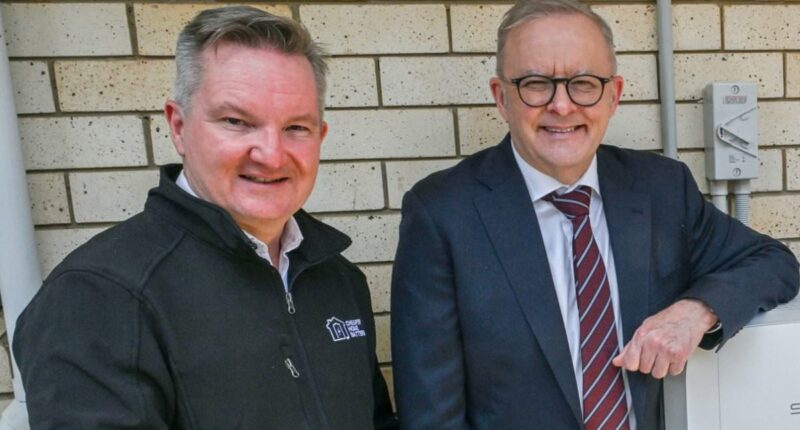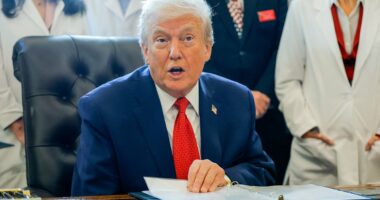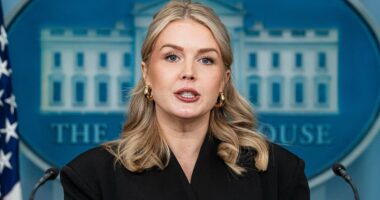Share this @internewscast.com
Addressing climate change by reducing emissions is a necessary but challenging endeavor, often fraught with complexity and significant expense.
Australia contributes a modest 1.3 percent to global emissions, reflective of its relatively small population. However, the nation plays a significant role in the global fossil fuel market, exporting large quantities of coal and gas. These exports lead to emissions that are not accounted for in Australia’s national statistics, even though they far exceed the country’s domestic emissions.
This situation presents a paradox for Australians. Citizens face higher energy costs domestically to reduce emissions, which have minimal global impact, all while the country continues to export coal that contributes to pollution worldwide, ultimately helping to keep energy prices lower in other nations.
Australia’s pursuit of climate targets has been ongoing for decades. The nation first began setting formal environmental goals after signing the UN climate convention in the early 1990s. A significant milestone was reached in December 2007, when then-Prime Minister Kevin Rudd ratified the Kyoto Protocol, committing Australia to limit its average emissions to 108 percent of 1990 levels.
When did we first start striving for formal targets?
Australia signed the UN climate convention in the early 1990s, but the first quantified constraint arrived with the Kyoto Protocol. Kevin Rudd ratified Kyoto in December 2007, committing Australia to cap average emissions at 108 per cent of 1990 levels.
It was a relatively soft commitment by developed world standards, but it was the first binding pledge.
Australia subsequently reported that it met the Kyoto commitments, and the Clean Energy Regulator confirmed we also met the second Kyoto target for 2020. The 2020 pledge was to be 5 per cent below 2000 levels.

Australia’s share of global emissions is small, about 1.3 per cent in total, because we are a small population nation. Yet we also export coal and gas on a vast scale
Those early milestones were achieved, at least in part, through clever land-use accounting techniques and structural shifts in the power sector.
The whole debate changed with the Paris Agreement, which dramatically increased targets and put significant pressure on energy prices.
The original Paris emissions target was for a 26 to 28 per cent cut on 2005 levels by 2030. In 2022, it was upgraded and legislated to 43 per cent below 2005 levels. In September this year, Labor set a new 2035 target of 62 to 70 per cent below 2005 emissions levels, after receiving advice from the Climate Change Authority.
These higher targets matter politically because they translate into new sector-by-sector expectations: decarbonising electricity faster, pushing industry under the Safeguard Mechanism to cut roughly 5 per cent a year through to 2030, and electrifying transport and buildings at a pace that voters will notice in their wallets and within their neighbourhoods.
So how close are we to achieving either the 2030 or 2035 targets?
This year’s inventory reveals that emissions are trending down, but the heavy lift is still ahead. In other words, if Australia is to achieve the targets set, including the longer-term net zero target for 2050, economic pain is likely, unless there are technological leaps that we simply cannot predict.
On the government’s own projections from last year, we were on track for a 42 per cent cut by 2030 and a 51 per cent cut by 2035. In other words, the newly announced 70 per cent target for 2035 demands new policies to discourage emissions and penalise their use.
What is Labor’s plan to close the gap? It has three parts.

Emissions are trending down in Australia, but the heavy lift is still ahead
First, making changes to the electricity grid. It is aiming for an 82 per cent renewables share by 2030, backed by a Capacity Investment Scheme that underwrites new wind, solar, and firming.
The latest tender round awarded contracts using big battery capacity, but analysts warn the 82 per cent goal is at risk due to transmission delays and connection bottlenecks.
AEMO has also flagged reliability risks unless 10,000 km of new and upgraded transmission lines are built.
Global energy consultants Wood Mackenzie say the 2030 renewables share is more likely to be around 58 per cent, rather than achieving the government’s 82 per cent goal.
Secondly, Labor is pushing industry to cut its emissions intensity, crediting those who get there quickly and penalising those who do not. It is targeting 200 so-called big polluters under reformed safeguard mechanisms.
Critics worry that doing so will push up consumer costs and lower business profitability, thereby damaging the economy.
Thirdly, the government is underwriting new projects to encourage private investment. It hopes that by taking on downside risks, private money will flow in, advancing investment and new technology.
Doing so is expensive up front, and the build-out shows up in network charges and taxes before it ever starts to deliver lower wholesale prices.
Global analysis suggests that decarbonisation spending must roughly triple to reach the net zero by 2050 goal.

Global analysis suggests that decarbonisation spending must roughly triple to reach the net zero by 2050 goal
The politics of price spikes are immediate and obvious, whereas the potential benefits of electrification and cheaper renewable energy accrue over a much longer timeframe and are uneven across regions.
This helps explain the very different perspectives we are seeing on this issue within Labor, the regionally based Nationals, and the divided Liberal Party.
So is net zero by 2050 even possible? It is possible, but it is not probable, and whether we get there or not, today’s politicians will not be around to be judged on their successes or failures, on their decision to bet the house on getting there, or on their choice to walk away from the target.
On the positive side of the ledger, the emissions intensity of the economy continues to decline. Coal generation is structurally in retreat, and clean technology costs continue to fall.
On the negative side, however, there are serious system risks.
The grid is unstable, firming at scale is not happening, and supply chains remain problematic. Technology assumptions are also risky.
If we lag behind the 82 per cent renewables goal this decade, the 2035 step up to a 62 to 70 per cent cut below 2005 levels becomes a cliff rather than a ramp -impossible to achieve despite all the economic pain that comes from trying.
But maybe trying is good enough, even if the goals are stretched further into the future.
That is the view of many people who believe in climate change and worry about its effects. It is especially the view among younger voters.
But there are also plenty of people who think that the targets are mythical and that the focus should be on adapting to climate changes we cannot control or reverse.
Labor treats the targets as non-negotiable and has locked in ambitious 2035 goals in exactly that spirit. Critics call it zealotry when the numbers are aspirational and the costs are biting down hard on everyday Australians.
On the other side of politics, the Coalition is moving in the opposite direction.

The Nationals have now formally dumped net zero by 2050 and want to peg their ambitions to the OECD average
The Nationals have now formally dumped net zero by 2050 and want to peg their ambitions to the OECD average.
Meanwhile, Liberals are openly debating whether to follow the junior coalition partner’s footsteps and look likely to do so.
The ongoing climate wars increase the risk profile for private sector investments.
Labor says that is the Coalition’s fault for being sceptical about the net zero target. The Coalition says scepticism is the only realistic position unless you treat net zero as zealotry.
If targets are scrapped or made deliberately vague, capital goes elsewhere. If targets are pursued without a credible delivery and price impact plan, public consent frays.
Either path can fail, which suggests that both major parties share the blame.
The logical middle ground is to be honest about what targets are and what they are not.
Australia’s contribution is small in a planetary sense but not irrelevant, especially given our export footprint.
It also means acknowledging that net zero by 2050 is a stretch. Expectations should be calibrated accordingly.
Calling it aspirational is fine, but pretending it is effortless and painless is not.

















